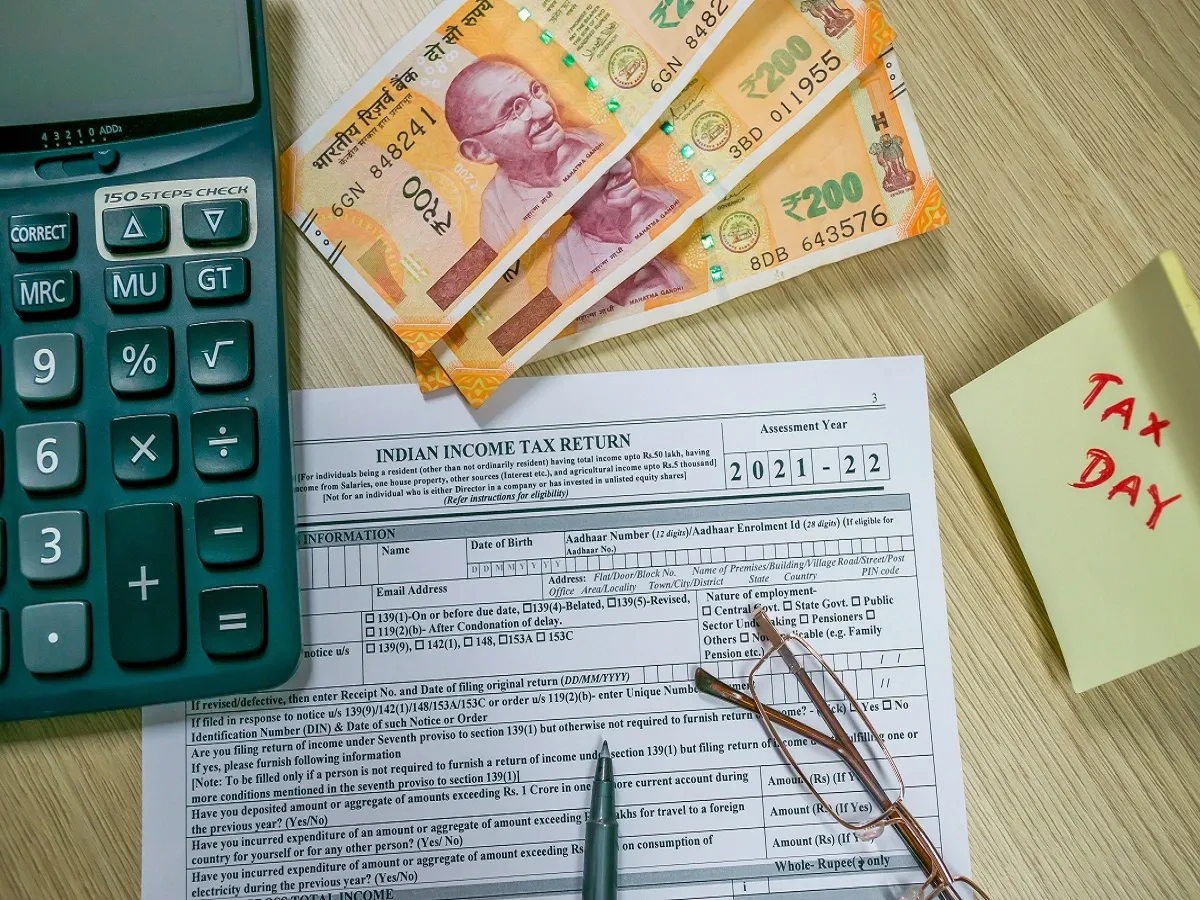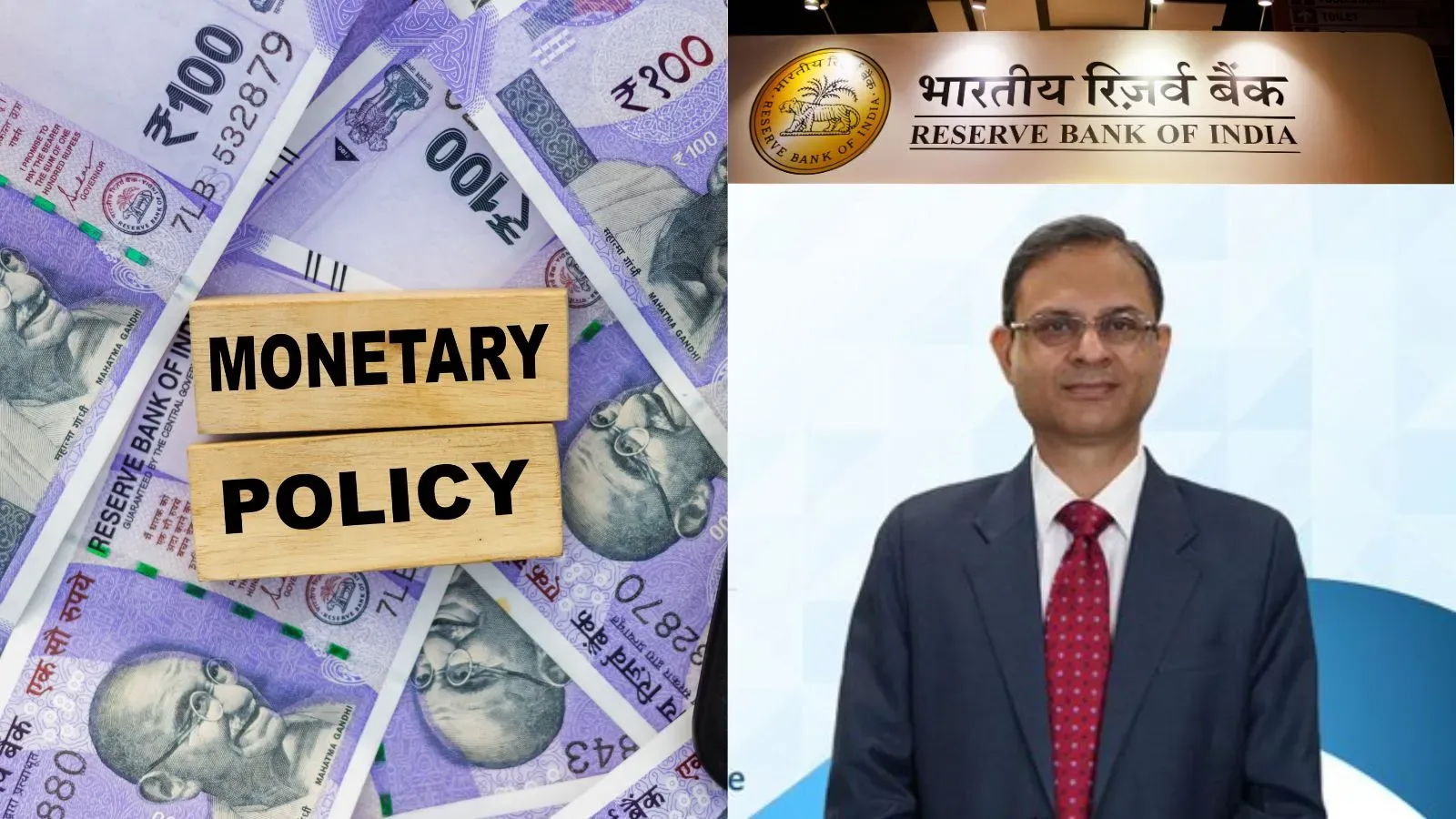Business News
Income Tax Budget 2024 Highlights: Tax slabs under new regime revised; standard deduction raised to ₹75,000
.png)
14 min read | Updated on July 23, 2024, 13:52 IST
SUMMARY
Apart from announcing new income tax slabs, the FM raised exemption limit for capital gains tax on long-term assets to ₹1.25 lakh per year from ₹1 lakh. Sitharaman also announced that short term gains on some assets will attract a tax of 20%.

Currently, the new tax regime is the default Income Tax regime applied on individual taxpayers
Finance Minister Nirmala Sitharaman announced new income tax slabs under new tax regime, which would allow taxpayers to save up to ₹17,500. She also announced an increase in the standard deduction amount by 50%, from ₹50,000 at present to ₹75,000.
Income Tax Budget 2024 LIVE Updates at 12:45 pm: How the revised new tax regime compares with the old tax regime
The old tax regime remains unchanged, with those earning from rom ₹2.5 lakh to ₹5 lakh being taxed at 5%, those from rom ₹5 lakh to ₹10 lakh taxed at the rate of 20%, and those earning more than ₹10 lakh being charged at 30%.
Here's how the old tax regime stands:
| Annual taxable income | Tax rate |
|---|---|
| Upto ₹2.5 lakh | Nil |
| From ₹2.5 lakh to ₹5 lakh | 5% |
| From ₹5 lakh to ₹10 lakh | 20% |
| Above ₹10 lakh | 30% |
In contrast, here's a look at the revised new tax regime:
| Income Range (₹) | Tax Rate (%) |
|---|---|
| ₹0 - ₹3,00,000 | Nil |
| ₹3,00,001 - ₹7,00,000 | 5% |
| ₹7,00,001 - ₹10,00,000 | 10% |
| ₹10,00,001 - ₹12,00,000 | 15% |
| ₹12,00,001 - ₹15,00,000 | 20% |
| Above ₹15,00,000 | 30% |
Income Tax Budget 2024 LIVE Updates at 12:30 pm: Tax slabs under new regime revised
Following are the new income tax slabs under the new tax regime:
- ₹0-3 lakh - Nil
- ₹3-7 lakh - 5%
- ₹7-10 lakh - 10%
- ₹10-12 lakh - 15%
- ₹12-15 lakh - 20%
- ₹15 lakh - 30%
| Income Range (₹) | Tax Rate (%) |
|---|---|
| ₹0 - ₹3,00,000 | Nil |
| ₹3,00,001 - ₹7,00,000 | 5% |
| ₹7,00,001 - ₹10,00,000 | 10% |
| ₹10,00,001 - ₹12,00,000 | 15% |
| ₹12,00,001 - ₹15,00,000 | 20% |
| Above ₹15,00,000 | 30% |
Here's how the income tax slabs stood under the new regime before the FM's announcement:
| Total annual taxable income | Rate of tax applicable |
|---|---|
| Upto ₹3 lakh | NIL |
| From ₹3 lakh to ₹6 lakh | 5% |
| From ₹6 lakh to ₹9 lakh | 10% |
| From ₹9 lakh to ₹12 lakh | 15% |
| From ₹12 lakh to ₹15 lakh | 20% |
| ₹15 lakh and above | 30% |
Income Tax Budget 2024 LIVE Updates at 12:25 pm: Standard deduction raised to ₹75,000
Income Tax Budget 2024 LIVE Updates at 12:17 pm: Exemption on capital gains tax extended to ₹1.25 lakh per year
- Exemption on capital gains tax on long-term assets has been extended up to ₹1.25 lakh per year from ₹1 lakh, the finance minister said.
- Long-term capital gains tax raised to 12.5% from 10%
- Short term gains on some assets will attract a tax of 20%
Income Tax Budget 2024 LIVE Updates at 12:14 pm: TDS rate on e-commerce operators slashed to 0.1%
TDS rate on e-commerce operators slashed to 0.1% from 1%, Sitharaman said.
Income Tax Budget 2024 LIVE Updates at 12:12 pm: Fiscal deficit target further narrowed to 4.9%
The fiscal deficit target for FY25 has been further scaled down to 4.9% from 5.1% in the Interim Budget, Finance Minister Nirmala Sitharaman said in her Budget speech.
Income Tax Budget 2024 LIVE Updates at 12:10 pm: Goods involved in manufacture of solar cells, panels added to duty exemption list
Capital goods involved in manufacture of solar cells, panels added to duty exemption list, the finance minister said.
Income Tax Budget 2024 LIVE Updates at 12:08 pm: 25 critical minerals fully exempt from customs duty
A total of 25 critical minerals are being exempt from customs duty, in order to boost their availability for strategic uses, Sitharaman said.
Income Tax Budget 2024 LIVE Updates at 12:06 pm: Duty on mobile phones, chargers reduced to 15%
Duty on mobile phones, and mobile chargers is being reduced to 15%, Finance Minister Sitharaman said.
Income Tax Budget 2024 LIVE Updates at 12:05 pm: Three critical medicines exempt from customs duty
Three more medicines, which are involved in the treatment of cancer, are being fully exempt from customs duty, FM Sitharaman said.
Income Tax Budget 2024 LIVE Updates at 11:55 am: Tax announcements expected shortly, track FM Sitharaman's speech live here
Income Tax Budget 2024 LIVE Updates at 11:45 am: Capex target retained at Rs 11.1 lakh crore
FM Sitharaman announced that the capital expenditure target has been retained at Rs 11.1 lakh crore, which is 3.4% of India's total gross domestic product. The target is the same as that was set during the Interim Budget.
Income Tax Budget 2024 LIVE Updates at 11:37 am: Announcement on taxation rates expected shortly
The announcements related to the Income Tax rate is expected to be made by Finance Minister Nirmala Sitharaman shortly. Stay tuned here for the latest updates.
Income Tax Budget 2024 LIVE Updates at 11:25 am: Income Tax slabs were left unchanged in Interim Budget
The income tax slabs were left unchanged in the Interim Budget presented in February. Under the old tax regime, those earning annually between Rs 3 and Rs 10 lakh are taxed between 5% and 20%, and those earning above Rs 10 lakh are taxed at the rate of 30%.
Under the new tax regime, those earning between Rs 3 lakh and Rs 15 lakh are taxed between 5% and 20%, and those with annual income of above Rs 15 lakh are taxed at the rate of 30%.
Income Tax Budget 2024 LIVE Updates at 11:15 am: 5 schemes with outlay of Rs 2 lakh crore announced to facilitate employment, skilling
Income Tax Budget 2024 LIVE Updates at 11:05 am: FM Sitharaman begins Budget speech; all eyes on taxation rates
Finance Minister Nirmala Sitharaman has begun reading out her Budget speech. All eyes remain on the announcements related to the taxation rates, which will affect the bulk of Indian salaried individuals and other taxpayers.
Income Tax Budget 2024 LIVE Updates at 11:00 am: Parliament proceedings begin, FM Sitharaman to start Budget speech shortly
The Parliament proceedings have begun. Finance Minister Nirmala Sitharaman will begin presenting the Union Budget shortly.
Income Tax Budget 2024 LIVE Updates at 10:51 am: FM Nirmala Sitharaman to present Budget shortly
Finance Minister Nirmala Sitharaman will present the Budget for FY25 shortly. All eyes are on the announcements related to the Income Tax, which will affect the bulk of the salaried class. Stay tuned here for the latest updates.
Income Tax Budget 2024 LIVE Updates at 10:41 am: Here's how to check your income tax using Upstox's calculator
Income Tax Budget 2024 LIVE Updates at 10:32 am: Why is old tax regime still favoured by a section of taxpayers?
- Call it an age-old habit, or neophobia (fear of the new), but the old tax regime is still favoured among a significant section of taxpayers as it promotes compulsory savings. Taxpayers use deductions offered under Section 80C of the Income Tax Act, 1961, to save taxes by building a large portfolio of investments.
- However, not many are aware that, besides the popular deductions under Section 80C and other tax-saving tools like LTA (leave travel allowance), salaried employees can also avail exemptions on certain other allowances that help them meet day-to-day expenditure.
Income Tax Budget 2024 LIVE Updates at 10:16 am: CII pitched for tax relief for individuals ahead of Budget
In its pre-budget representation to Revenue Secretary Sanjay Malhotra, CII President Sanjiv Puri suggested lowering excise duty on petrol and diesel, rationalising capital gains taxes and maintaining corporate taxes at current levels.
The industry chamber also suggested that the government may use a part of the Rs 2.11 lakh crore RBI dividend to boost capital spending by 25% in FY25. This will help to maintain the upward trajectory of public capex and crowd-in-private capex by reinvigorating economic activities and creating demand.
Income Tax Budget 2024 LIVE Updates at 10:01 am: FM Nirmala Sitharaman arrives in Parliament
Finance Minister Nirmala Sitharaman has arrived in the Parliament. She is scheduled to the present the Union Budget at 11 am. The Budget documents have also reached the Parliament.
Income Tax Budget 2024 LIVE Updates at 9:51 am: Are rate cuts on the cards?
- The Centre is considering to reduce the taxation rate in the highest tax slabs under the old and new income tax regimes, news agency Reuters reported ahead of the Budget, citing persons who are privy to the development.
-
- Under the new tax regime, the highest tax slab of 30% is imposed on annual income above ₹15 lakh. This rate is expected to be reduced to a point which is yet to be determined, one of the sources told the news agency. Read more
Income Tax Budget 2024 LIVE Updates at 9:34 am: Why easing of income tax rates is required?
Budget 2024 needs to worry about the “unwillingness of people to spend”, former SEBI chairman Mr. M Damodaran said last week. “Instead of spending, people are of the mindset that they should invest in something that will protect their future, as they fear that the next crisis after COVID-19 might be around the corner.”
In order to increase the spending capacity, the government should ease the taxation rates for the middle class to raise their disposable income, experts said.
Income Tax Budget 2024 LIVE Updates at 9:30 am: JP Morgan's Chief India Economist says indirect taxes should be simplified
- While speaking at a pre-budget series hosted by Upstox, JP Morgan's Chief India Economist Sajjid Chinoy said the indirect taxes should be simplified further.
- From the government’s point of view, the focus should be on direct taxes, Chinoy suggested.
- “Indirect taxes should be simple, broadbased, and we should focus on direct taxes when it comes to progressivity,” he said.
Income Tax Budget 2024 LIVE Updates at 9:27 am: Former SEBI chief bats for reduced tax rates
- Former SEBI chief M Damodaran, while speaking at a pre-budget series hosted by Upstox last week, said the government should reduce tax rate in a bid to boost consumption.
- “Reduce tax rate, scrap all deductions and exemptions. Just scrap that and see how much money comes. People will sleep better as you won't have to calculate how much you can save where. Financial engineering would be better and simpler,” he said. Read more
Income Tax Budget 2024 LIVE Updates at 9:24 am: Ease income tax exemption limit to ₹5 lakh, raise standard deduction, says EY
Income Tax Budget 2024 LIVE Updates at 9:19 am: What is standard deduction?
- Simply put, the standard deduction is a flat deduction that a taxpayer can subtract from the total salary in a particular financial year. All salaried individuals are entitled to the standard deduction, which is available for both new and old tax regimes.
- In Union Budget 2018, former Finance Minister Arun Jaitley had introduced a standard deduction of ₹40,000, which was increased to ₹50,000 by Nirmala Sitharaman in Budget 2019.
Income Tax Budget 2024 LIVE Updates at 9:15 am: What are the benefits of new tax regime?
- The new tax regime is the default regime for the financial year 2024-25 (AY 2024-25). Tax rates under the new tax regime stay the same for all categories—HUFs and individuals of any age.
- The new tax regime currently offers full tax rebate on an income up to ₹7 lakh under Section 87A of the Income Tax Act. If the taxable income crosses ₹7 lakh per annum, taxpayers will not be eligible for the rebate and will have to pay the tax as per the slab.
Income Tax Budget 2024 LIVE Updates at 9:00 am: What are the benefits of old tax regime?
- Despite higher tax rates, the old tax regime has provisions of different deductions and exemptions. It also differentiates taxpayers on the basis of their age.
- In comparison, the new regime permits limited deductions and exemptions and treats everyone uniformly in lieu of lower tax rates.
Currently, the country has two Income Tax regimes -- the old tax regime and the new tax regime. The latter allows less deductions, but the rate of taxation is relatively lower.
Under the old tax norms, the rate of taxation is higher, but individuals are allowed to claim up over deductions, ranging from house rental allowance (HRA) to leave travel allowance, and deductions under Sections 80C and 80U under the Income Tax Act, 1961.
Tax slabs under old tax regime
Here's a look at how individuals are charged under the old tax regime:
| Annual taxable income | Tax rate |
|---|---|
| Upto ₹2.5 lakh | Nil |
| From ₹2.5 lakh to ₹5 lakh | 5% |
| From ₹5 lakh to ₹10 lakh | 20% |
| Above ₹10 lakh | 30% |
Tax slabs under new tax regime
Here's a look at how individuals are taxed under the new tax regime:
| Total annual taxable income | Rate of tax applicable |
|---|---|
| Upto ₹3 lakh | NIL |
| From ₹3 lakh to ₹6 lakh | 5% |
| From ₹6 lakh to ₹9 lakh | 10% |
| From ₹9 lakh to ₹12 lakh | 15% |
| From ₹12 lakh to ₹15 lakh | 20% |
| ₹15 lakh and above | 30% |
Notably, the new tax regime is the default taxation regime since fiscal year 2023-24. The regime currently offers full tax rebate on an income up to ₹7 lakh under Section 87A of the Income Tax Act. If the taxable income crosses ₹7 lakh per annum, taxpayers will not be eligible for the rebate and will have to pay the tax as per the slab.
Till FY24, standard deduction of up to ₹50,000 was allowed only for taxpayers who have opted to be assessed under the old regime. However, the government provided a major relief in the FY24 Budget, when it allowed assesses under the new regime to also claim a standard deduction of ₹50,000.
By signing up you agree to Upstox’s Terms & Conditions
About The Author
Next Story

